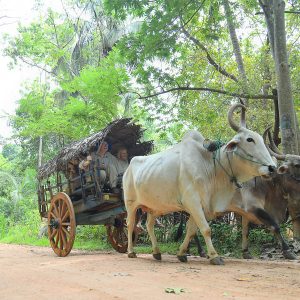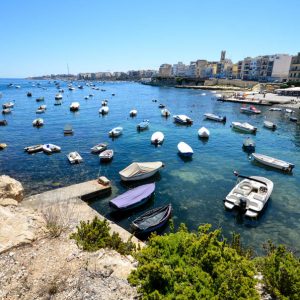Bhopal is not India’s capital, but it has all the features and reflects the great highlights of the country. Bhopal is actually the capital of Madhya Pradesh State. There was a time that Bhopal was the heart of an independent State. The city was forced to join the union of India in 1949, but since then the royalty attention has faded and the city’s monuments have been neglected. However, there are still signs of the glory days to be seen in the ruins of the palaces and old mansions. My guide told me that the local government has become more aware of tourism, so there are plans to restore and refurbish these architectural remainders of the Nawab era. I could see, in the centre of the city, that work had already started. The restoration process should result in a brighter future for this historic city.
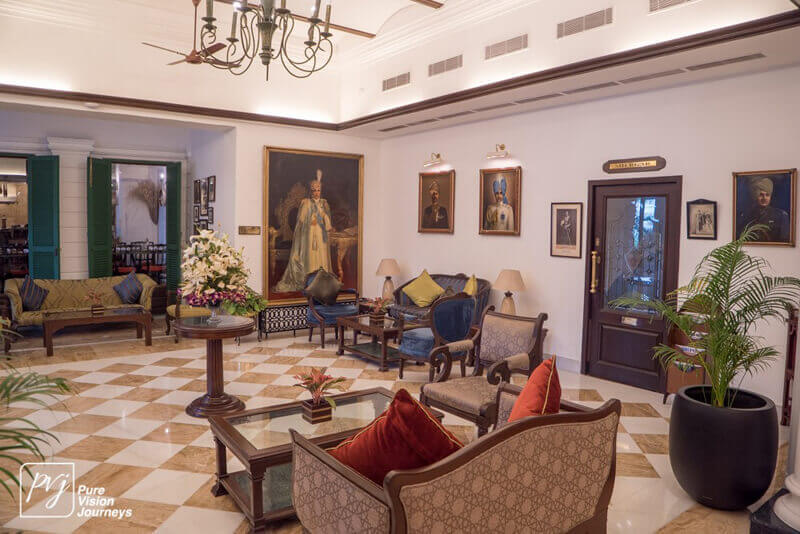 I stayed at the Jehan Numa Palace Hotel which was a convenient location from which to discover Bhopal’s attractions. During my stay at this former royal palace, I discovered not only the heritage and architectural wonders left behind by Nawab dynasty, particularly by the Begums of Bhopal but also the nature, wildlife, tribally cultural significance and ancient temples. Where in the world could you find all these attractions in such close proximity: lakes, the national park, the traditional bazaar, an old cobbled town, monumental palaces, mansions, epic mosques and temples.
I stayed at the Jehan Numa Palace Hotel which was a convenient location from which to discover Bhopal’s attractions. During my stay at this former royal palace, I discovered not only the heritage and architectural wonders left behind by Nawab dynasty, particularly by the Begums of Bhopal but also the nature, wildlife, tribally cultural significance and ancient temples. Where in the world could you find all these attractions in such close proximity: lakes, the national park, the traditional bazaar, an old cobbled town, monumental palaces, mansions, epic mosques and temples.
I explored the city of Bhopal accompanied by two local lady guides. Miss Drashti Saxena was Hindu and Miss Saman Ali was a Muslim. Both of them seemed to be very pleasant and welcoming, working closely in tourism. We began our exploration on VIP road, stopping on the banks of the Upper Lake to visit Gohar Mahal.
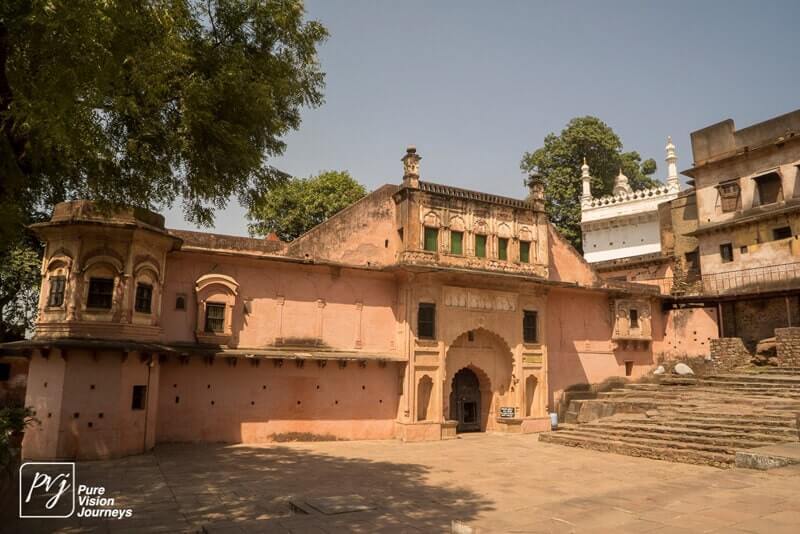 Gohar Mahal (Gohar Palace) is a palace built in 1820 by Qudisiya Begum known as Gohar Begum, the first woman of the Nawab Dynasty who became the ruler of Bhopal after the death of her husband in 1819. The palace is a marvellous piece of architecture, combining Islamic art with a touch of Hindu and Mogul influence. This great memorial to Gohar Begum’s influence on the history of Bhopal has some extraordinary features including beautiful court yards, decorated rooms, ornamental ceilings, large halls, arched terraces, archways, wall paintings and fine woodwork. The palace looks tired and in decay because of years of neglect, but the restoration work has already begun to bring back to life the faded collages in doors, walls and passageways.
Gohar Mahal (Gohar Palace) is a palace built in 1820 by Qudisiya Begum known as Gohar Begum, the first woman of the Nawab Dynasty who became the ruler of Bhopal after the death of her husband in 1819. The palace is a marvellous piece of architecture, combining Islamic art with a touch of Hindu and Mogul influence. This great memorial to Gohar Begum’s influence on the history of Bhopal has some extraordinary features including beautiful court yards, decorated rooms, ornamental ceilings, large halls, arched terraces, archways, wall paintings and fine woodwork. The palace looks tired and in decay because of years of neglect, but the restoration work has already begun to bring back to life the faded collages in doors, walls and passageways.
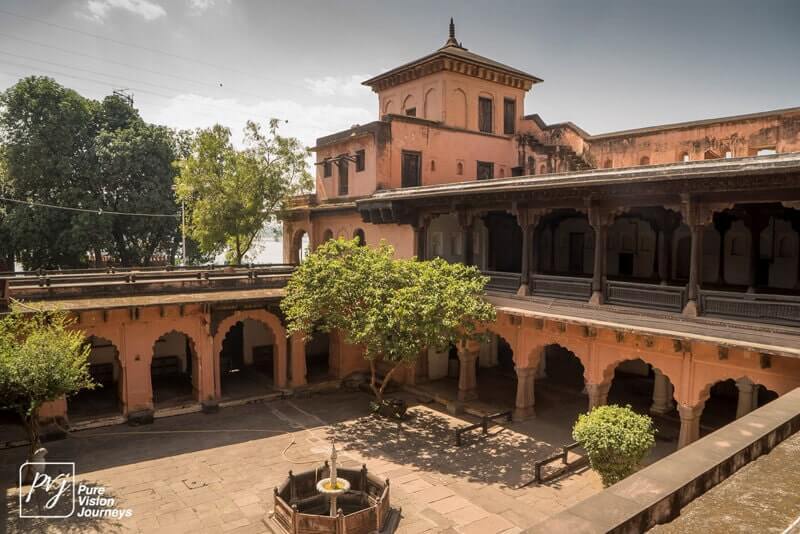 Entry to Gohar Mahal was through a giant wooden door under an archway in the reddish façade of the palace. My guide knocked at the closed door, and it took several minutes before a guard opened the door. Despite being a guest of the local tourist office, I was told we were not allowed to take pictures. I did manage to capture some of the enduring features of the palace as we made our way up narrow stairs to different levels to reach the rooftop of this three to four storey building. It gave a good view of the Upper Lake. Miss Drashti told me that the rooms in the palace were designed with the double ceilings. The false ceiling and a ventilation system with small grills was designed to keep the room cool in the harsh summer heat. There were two court yards, one with a fountain in the middle. We entered a small yard on the west side of the palace and left Gohar Mahal through a back door.
Entry to Gohar Mahal was through a giant wooden door under an archway in the reddish façade of the palace. My guide knocked at the closed door, and it took several minutes before a guard opened the door. Despite being a guest of the local tourist office, I was told we were not allowed to take pictures. I did manage to capture some of the enduring features of the palace as we made our way up narrow stairs to different levels to reach the rooftop of this three to four storey building. It gave a good view of the Upper Lake. Miss Drashti told me that the rooms in the palace were designed with the double ceilings. The false ceiling and a ventilation system with small grills was designed to keep the room cool in the harsh summer heat. There were two court yards, one with a fountain in the middle. We entered a small yard on the west side of the palace and left Gohar Mahal through a back door.
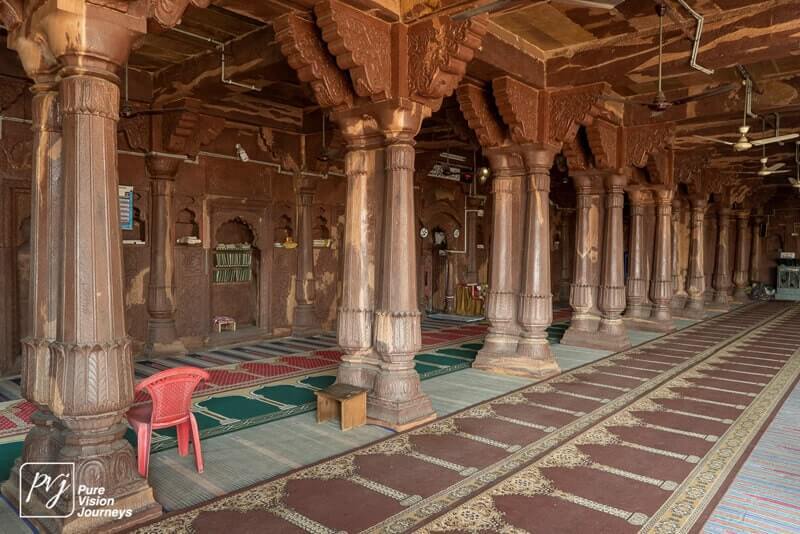 Opposite the Gohar Mahal was Seedhi Ghaat Wali Masjid which overlooked the Upper Lake. This Mosque was small, but magnificent in its style, with the prayer room area built in reddish sandstone with beautiful columns and arches. The design and construction of this Mosque is very similar to other large heritage mosques such as Moti Masjid and Taj-ul-Masajid.
Opposite the Gohar Mahal was Seedhi Ghaat Wali Masjid which overlooked the Upper Lake. This Mosque was small, but magnificent in its style, with the prayer room area built in reddish sandstone with beautiful columns and arches. The design and construction of this Mosque is very similar to other large heritage mosques such as Moti Masjid and Taj-ul-Masajid.
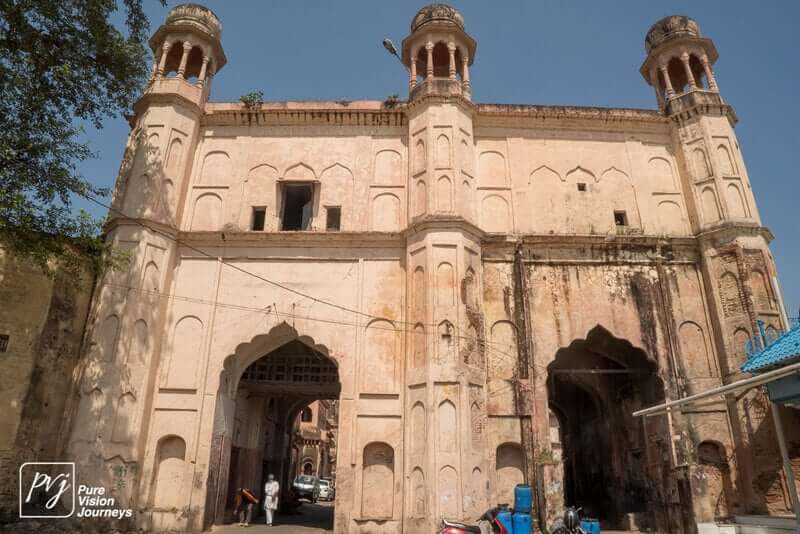 I went through a big arch next to Gohar Mahal, called the Sikandari Gate, which led me to a large square called Iqbal Maidan. This massive area seems to be the heart of ancient Bhopal as it is surrounded by the architectural splendours of Moti Mahal, Shaukat Mahal and Moti Majid. I looked around the square and for a moment felt that I had been transported into the 18th century. I imagined what the life would have been like in the square during Nawab era, crowds of people, horses and carriages.
I went through a big arch next to Gohar Mahal, called the Sikandari Gate, which led me to a large square called Iqbal Maidan. This massive area seems to be the heart of ancient Bhopal as it is surrounded by the architectural splendours of Moti Mahal, Shaukat Mahal and Moti Majid. I looked around the square and for a moment felt that I had been transported into the 18th century. I imagined what the life would have been like in the square during Nawab era, crowds of people, horses and carriages.
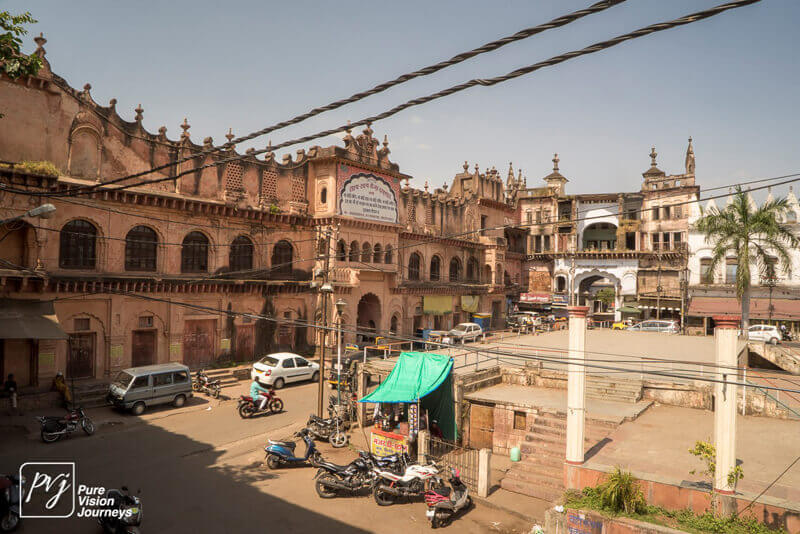 The Iqbal Maidan used to be called Khirniwala Maidan, because there was a beautiful garden full of khirni trees, known as the tree of life. There is still a three hundred-year-old khirni tree in the square. Drashti explained that the Maidan was renamed in the honour of the great Muslim poet, Mohammad Iqbal Lahori after India’s independence. Iqbal’s revolutionary poems inspired many Indians. His famous poem: “Sare Jahan Se Achha Hindustan Humara” which has been inscribed on a stand in the Maidan, means “Out of the whole world, Hindustan is the best place to live”.
The Iqbal Maidan used to be called Khirniwala Maidan, because there was a beautiful garden full of khirni trees, known as the tree of life. There is still a three hundred-year-old khirni tree in the square. Drashti explained that the Maidan was renamed in the honour of the great Muslim poet, Mohammad Iqbal Lahori after India’s independence. Iqbal’s revolutionary poems inspired many Indians. His famous poem: “Sare Jahan Se Achha Hindustan Humara” which has been inscribed on a stand in the Maidan, means “Out of the whole world, Hindustan is the best place to live”.
I continued to discover more of this glorious city, nourished by the Nawab Dynasty.
More information
To find out more about the Jehan Numa Palace Hotel and book your next trip, please visit www.jehannuma.com.
For more information about Bhopal, visit tourism.mp.gov.in.
To see more of Reza’s images of Jehan Numa Palace and Bhopal, go to www.amirinia.com/india.


